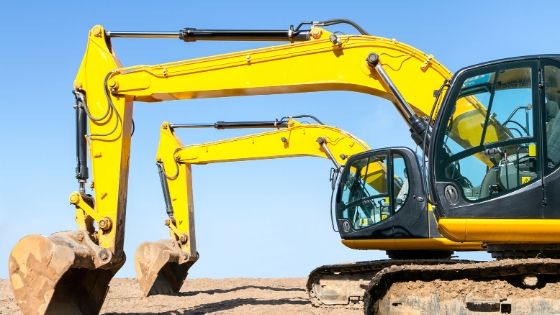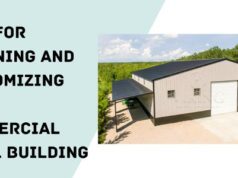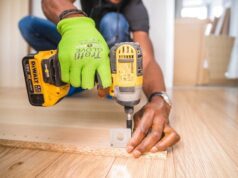Construction work requires the use of a variety of machines and mechanisms. Today, there are more than a hundred types of special equipment. This includes machines with specialized functions, i.e. perform certain, often highly specialized tasks. The most diverse types of special equipment are widely used in various sectors of construction, agriculture, production, warehousing and transportation.


To provide a wide range of types of services, special equipment is used universally. Typically, this is a machine with a large payload and cross-country ability, on which various attachments can be installed. The classification of different types of special equipment also includes a wide variety of highly specialized special vehicles. Often, such machines are not very mobile – they are assembled directly at the place of work or delivered there using trucks. The Boss in Australia has all types of construction equipment.
The construction of any structure cannot be imagined without special construction equipment whether it is a multi-storey residential building, industrial facility, shopping center or stadium. The preparation of concrete mortar, the production of reinforced concrete products, the delivery of material to a construction site, the movement of structures at the facility, and high-altitude work all depends on the construction machines. This is only a small part of the work that requires special equipment. So, let’s have a look at the types of these construction machines.
Types of Construction Machines
● Excavators
The most popular type of construction machines is excavators. These are universal machines, which are equipped with interchangeable attachments. The excavator can be used for earthmoving, as a front-end loader or grader. Among all types of special equipment, these construction machines like excavator grab have the largest category since minimization of manual labor is an important step to speed up construction and reduce costs. Such vehicles are available with different load capacities, so a suitable option can be found for both private and multi-story construction. Soil development like digging trenches and foundation pits are carried out by excavators, which can be single-bucket, multi-bucket or rotary. Most often, single-bucket excavators are used at construction sites in the city.
● Tower Cranes
For construction activity, special equipment services are needed if the building is under construction above two floors. In this case, you can not do without a construction crane or machines with similar capabilities. There are a lot of varieties of lifting special equipment. It can be mobile cars and stationary equipment that is assembled one-time directly at the facility with a platform, basket, hook or hook, etc.
A tower crane is a symbol of the facility being built. It can be seen on almost any construction site. A crane is used to move and deliver cargo to a height. The lifting height can reach 65-70 m and the length of the boom is 45-60 m. When building a low-rise building, more compact truck cranes are used. In the construction of chimneys, towers or high-rise buildings, self-elevating cranes are used, which rise as the object is erected to an ever-increasing height. In some such cases, the use of cargo helicopters is more appropriate.
● Loaders
The loader is needed for the delivery, loading, unloading and lifting of materials. Their mobility and compactness expand the scope of application. This type of special equipment for loading and unloading, as well as for moving goods within a warehouse or construction site. As a rule, loaders are compact in size so that they can be easily operated in confined spaces. They can be powered by a battery or liquid fuel, have different load capacities and types of lifting devices.
● Bulldozers
Representatives of this type of special equipment are used for layering, moving all kinds of materials and levelling plots for the construction site. Bulldozers are structurally different from excavators, but in many respects their functions are similar. If we talk about universal types of construction equipment, then bulldozers are used when a large amount of work is expected. According to the method of movement, the bulldozers are divided into wheeled and tracked. This construction equipment is used for levelling the soil layer, digging trenches, as well as for transporting bulk cargo. The bulldozer is an economical and efficient construction assistant.
● Hydraulic Hammer
It is used as an excavator attachment for the destruction of reinforced concrete structures, dismantling or partial destruction of an object for redevelopment. Without any problems, this equipment will grind concrete, stone, asphalt, paving slabs, demolish walls and partitions, a foundation of reinforced concrete and various other solid materials. The hydraulic hammer is also indispensable in the winter season because it copes well with frozen soil. Therefore, renting a hydraulic hammer allows you to qualitatively perform a huge number of different construction works. He will become your indispensable assistant.
● Concrete Mixer
A mobile or stationary concrete mixer provides the construction site with mortar. Modern construction without concrete is unthinkable. Ease for use, reliability and high-quality mixing has made this technique an integral part of the construction. Concrete mixers are used in both industrial and private construction. Using this equipment, you can reduce labor costs, as well as significantly reduce the time of work. Models of concrete mixers differ in volume. Concrete mixers with a capacity of up to one hundred liters are most often used in the construction of low buildings or small repair work.
Bottom Line
Construction is a complex and time-consuming process that requires special knowledge, skills and logistics. With the development of the industry, construction equipment is also being improved. Almost all construction equipment uses Jcb spare parts and structural elements, which are also, produced using special equipment. The bucket Boss is available at an affordable cost. Often these are bulky stationary lines for the production of reinforced concrete products and structures. Such lines require large investments and considerable staff, as well as labor-intensive transportation due to the large size.









